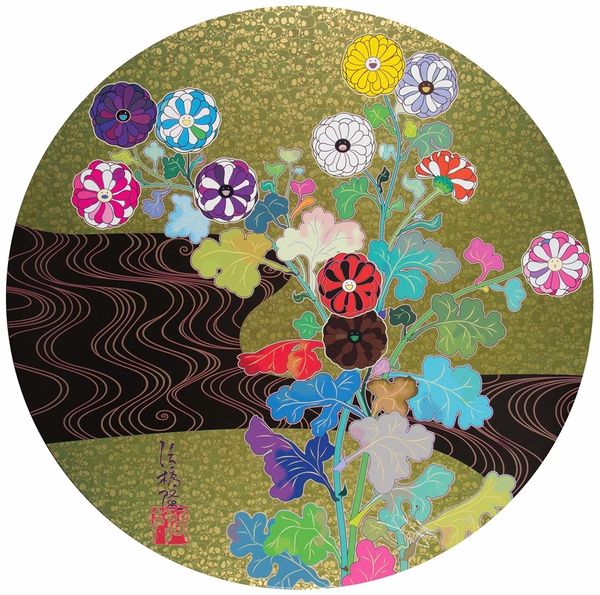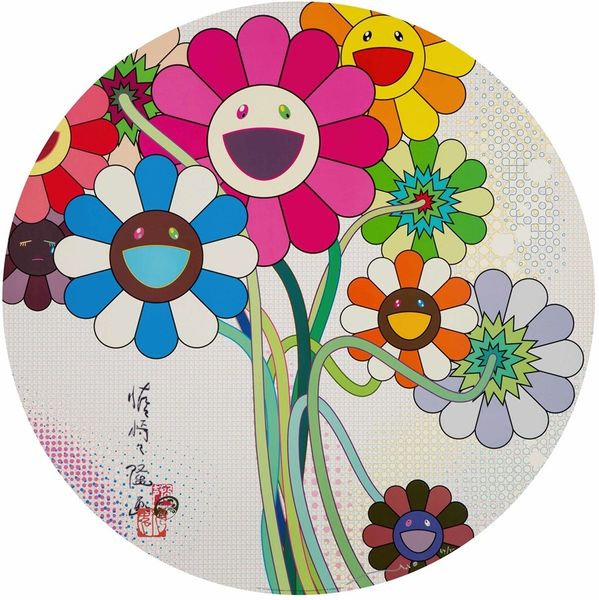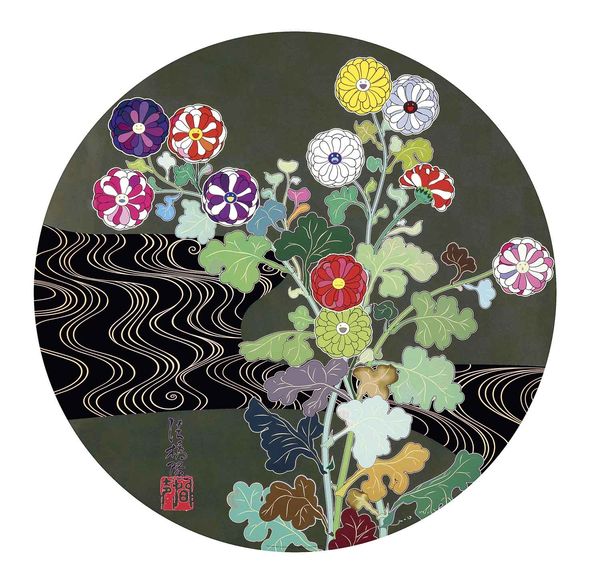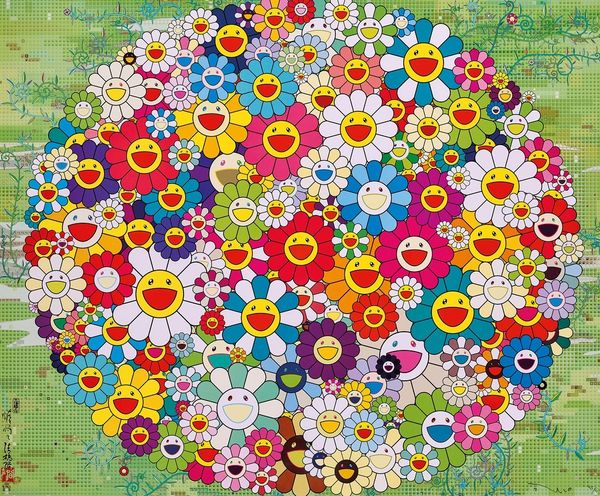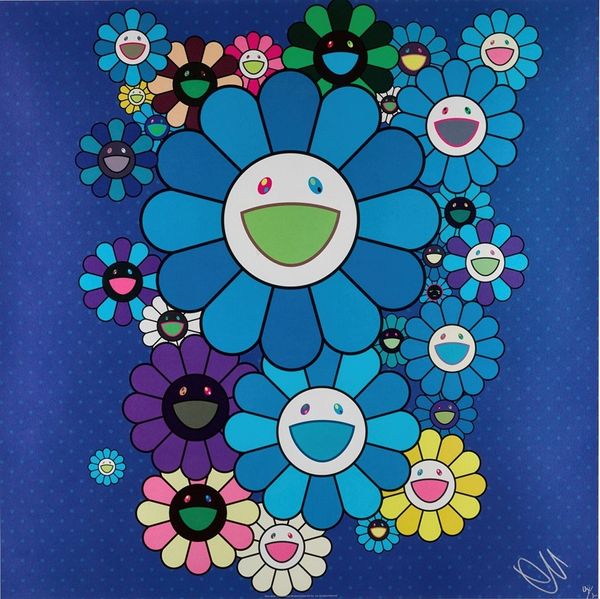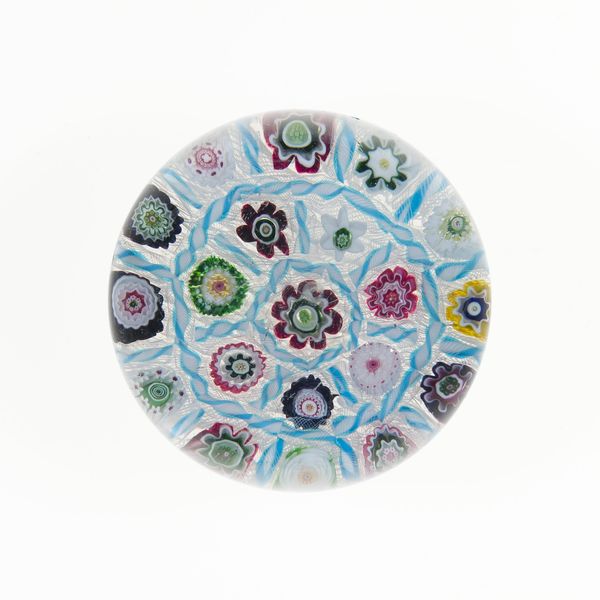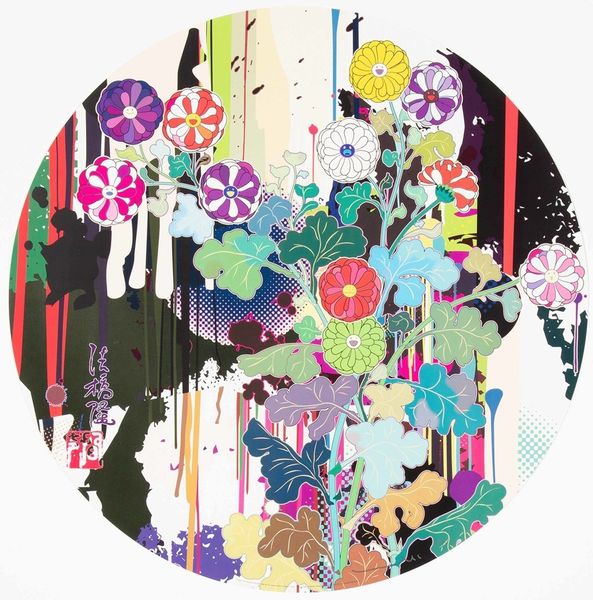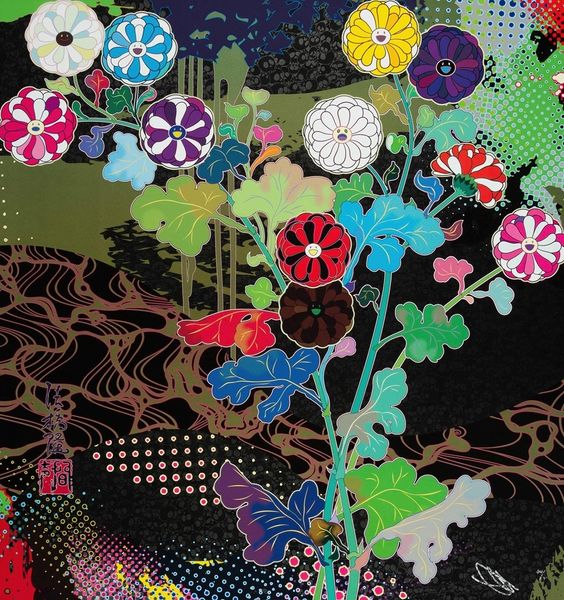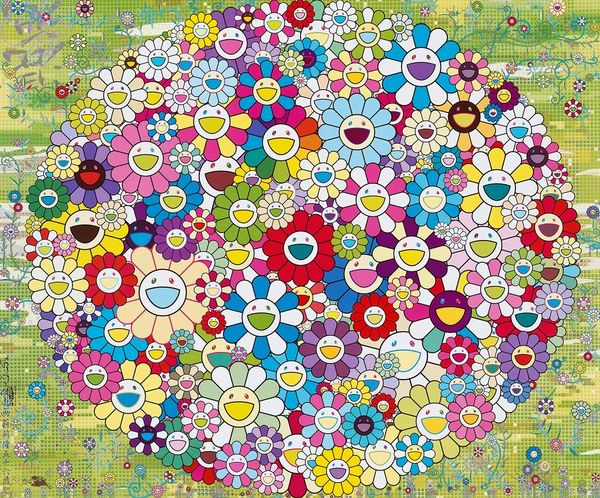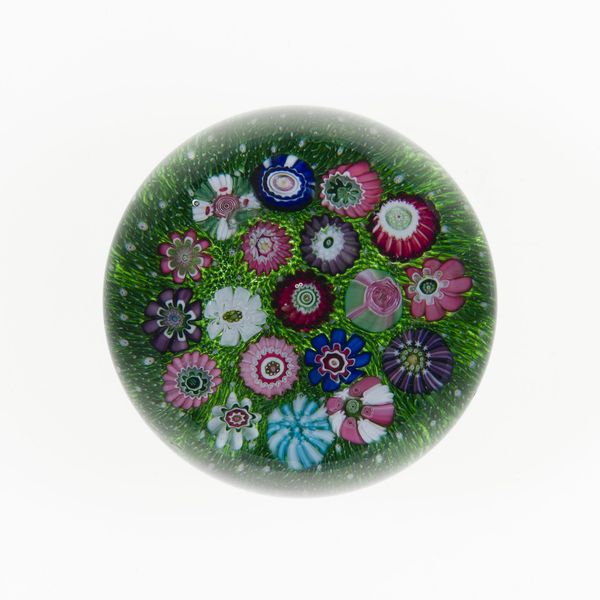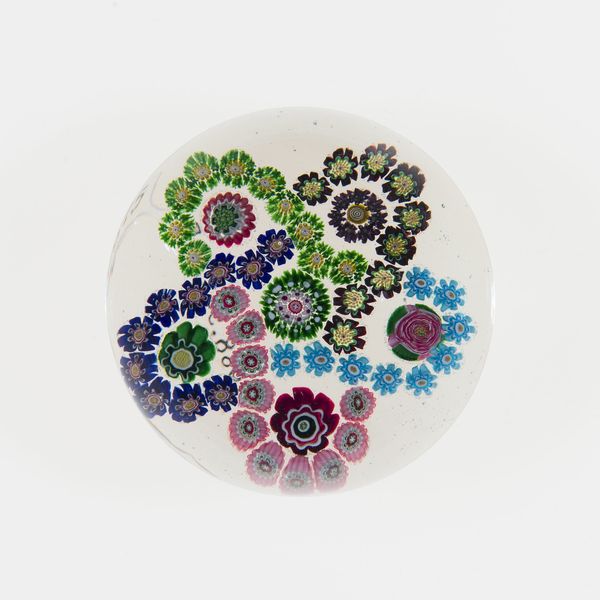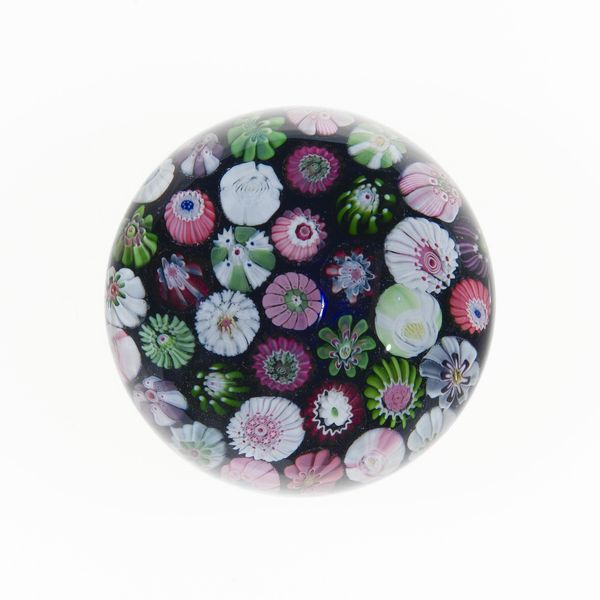
#
neo-pop
Copyright: Modern Artists: Artvee
Editor: So this is "Purple flowers in a bouquet" by Takashi Murakami, made in 2010 using acrylic paint. The cheerful smiling flowers are initially quite striking, but they also have a somewhat unsettling feeling to me. What do you see in this piece, considering Murakami's background? Curator: I see a complex layering of cultural references. Murakami's work often explores the intersection of traditional Japanese art, anime aesthetics, and global consumer culture. Those smiling flowers, for instance – on the surface they’re cute and inviting, drawing from the visual language of pop art and anime. But if we consider the historical context, particularly Japan's post-war identity and its embrace of consumerism, these seemingly innocent images take on a more critical dimension. Editor: Critical how? Are they meant to be satirical? Curator: Precisely! The almost obsessive repetition of these motifs, rendered in such a slick, commercial style, can be interpreted as a commentary on the superficiality and escapism that can permeate contemporary society. Consider the flower itself: a traditional symbol of beauty and fleeting life. But here, it's been transformed into something mass-produced and eternally cheerful, perhaps masking a deeper sense of unease. Editor: I hadn't considered that connection. The dark background makes the flowers "pop," in both the visual and cultural sense of the word. Curator: Exactly. The unsettling feeling you described – it's precisely that tension between surface-level joy and underlying anxiety that makes Murakami's work so compelling. Does knowing this alter your interpretation at all? Editor: Yes, absolutely. I think understanding that tension changes the entire piece for me. Thanks so much! Curator: My pleasure! It's important to engage critically with the seemingly simple visuals that surround us every day, in order to broaden intersectional narratives around the contemporary art and its effects.
Comments
No comments
Be the first to comment and join the conversation on the ultimate creative platform.
